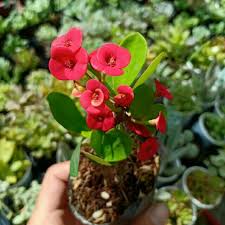The Story Behind Mooncakes: A Sweet Tradition of the Mid-Autumn Festival

Mooncakes, or Bánh Trung Thu, are an iconic and beloved treat that plays a central role in the Mid-Autumn Festival, one of the most important traditional celebrations in Chinese culture and several other East and Southeast Asian countries. These round, dense pastries are not just delicious desserts, but also hold deep cultural, historical, and symbolic meanings that are woven into the fabric of the Mid-Autumn Festival.
In this article, we will explore the story behind mooncakes, tracing their origins, the cultural significance of the Mid-Autumn Festival, and how these sweet pastries have evolved over the centuries. From their history as a tool of rebellion to their current status as a symbol of family unity and prosperity, mooncakes continue to be a cherished part of the Mid-Autumn celebration, bringing families together and connecting people to their heritage and traditions.
1. The Mid-Autumn Festival: Origins and Significance
The Mid-Autumn Festival, also known as the Moon Festival or Mooncake Festival, is celebrated on the 15th day of the 8th month of the lunar calendar, which typically falls in September or October. This festival has been celebrated for over 3,000 years in China and is rooted in ancient agrarian practices. The festival marks the end of the harvest season and is a time to give thanks for the bounty of the earth, as well as to pray for future prosperity and family unity.
The full moon, which is a central symbol of the festival, represents completeness, reunion, and harmony. During the Mid-Autumn Festival, families gather to admire the moon, light lanterns, and enjoy festive foods, particularly mooncakes. The round shape of the mooncake mirrors the roundness of the moon, symbolizing togetherness, family reunion, and unbreakable bonds.
Though the festival’s origins date back to ancient China, it has since spread across various countries, including Vietnam, Taiwan, Singapore, and Malaysia, where it is celebrated with similar customs. In each of these countries, mooncakes are enjoyed as part of the festivities and are often exchanged as gifts between friends, family, and colleagues, symbolizing goodwill, prosperity, and best wishes.
2. The Historical Origins of Mooncakes
Mooncakes have a rich and storied history, and their origins can be traced back to the Tang Dynasty (618-907 AD), during which mooncakes were already being consumed during the Mid-Autumn Festival. However, their current form and significance began to take shape during the Yuan Dynasty (1271-1368), when they became associated with a historical event that would change the course of Chinese history.
The Mooncake Rebellion: A Sweet Tool of Revolution
One of the most well-known stories about the origins of mooncakes revolves around the Yuan Dynasty and the Mongol invasion. During this period, the Mongols, led by Kublai Khan, ruled over China, and the Chinese people were subjected to harsh foreign rule. According to legend, a group of Chinese rebels wanted to overthrow the Mongol rulers but needed a way to communicate secretly without being detected.
To do so, they devised a clever plan using mooncakes as a medium. The rebels placed secret messages inside the mooncakes, which were then distributed to the Chinese population. The message contained instructions for a coordinated uprising against the Mongols, to take place during the Mid-Autumn Festival. The mooncakes served as both a practical means of delivering the message and a symbol of unity and resistance. The rebellion, known as the Mooncake Rebellion, ultimately succeeded in overthrowing the Mongol rulers and establishing the Ming Dynasty.
As a result of this historic event, mooncakes became even more deeply entrenched in the culture and traditions of the Mid-Autumn Festival. The association with revolutionary struggle and resistance gave mooncakes a symbolic significance beyond their culinary value. Today, they are still seen as a symbol of strength, perseverance, and unity.
3. The Cultural Significance of Mooncakes
In addition to their historical origins, mooncakes hold profound symbolic meaning in Chinese culture, especially during the Mid-Autumn Festival. The round shape of the mooncake is a representation of wholeness, unity, and completeness, aligning with the symbolic values of the full moon during the festival. Mooncakes are often exchanged as gifts between friends and family, symbolizing reunion, goodwill, and best wishes.
The filling inside the mooncake also carries symbolic meaning, with various ingredients representing different blessings. The traditional mooncake filling, which can include lotus seed paste, red bean paste, or salted egg yolk, symbolizes prosperity, health, and good fortune. Some mooncakes may also include other ingredients, such as nuts, fruits, or even meat, depending on regional variations and personal preferences.
Mooncakes are also a symbol of honoring ancestors and family unity. During the festival, many families will set out mooncakes on their altars as offerings to the moon goddess, Chang’e, or as part of their ancestor worship practices. By sharing mooncakes with loved ones, families celebrate the importance of being together, appreciating the bounty of life, and offering thanks for the harvest.
4. The Different Varieties of Mooncakes
Over the centuries, mooncakes have evolved into various regional styles and varieties, each with its unique flavor, texture, and filling. These variations often reflect local tastes and customs, and they offer a fascinating glimpse into the diversity of the Mid-Autumn Festival across different regions.
Cantonese Mooncakes
The Cantonese-style mooncake is perhaps the most well-known and widely recognized type of mooncake. It is characterized by its thin, golden-brown crust and rich, sweet fillings, such as lotus seed paste, red bean paste, or five kernel filling (a mixture of nuts and seeds). One of the most distinctive features of the Cantonese mooncake is the salted egg yolk, which is often placed in the center to symbolize the moon.
The Cantonese mooncake is typically round and is known for its smooth, delicate texture. These mooncakes are often beautifully decorated with intricate designs on the top, which may feature auspicious symbols or messages of good fortune.
Beijing Mooncakes
In contrast to the Cantonese mooncake, the Beijing-style mooncake has a thicker, more doughy crust and a less sweet filling. These mooncakes often contain savory fillings, such as lotus paste with salted egg yolk, bean paste, or jinhua ham (a type of cured ham). The flavor of these mooncakes is more complex and rich, catering to those who prefer a less sugary treat.
Shanghai Mooncakes
The Shanghai-style mooncake is known for its flaky crust, which is similar to the texture of bakery-style pastries. The filling may include sweet or savory ingredients, with popular options being lotus seed paste, red bean paste, and winter melon, as well as flaky egg yolk.
Suzhou Mooncakes
The Suzhou mooncake features a unique, crispy crust and is often filled with sweet lotus seed paste or five kernel filling. These mooncakes are characterized by their delicate design and intricate details, reflecting the city’s cultural heritage and artistic craftsmanship.
5. Modern Innovations and the Rise of Contemporary Mooncakes
While traditional mooncakes continue to be popular, especially during the Mid-Autumn Festival, modern variations have emerged, reflecting changing tastes and dietary preferences. These innovations include:
Ice Cream Mooncakes
A modern twist on the classic mooncake is the ice cream mooncake, which has become increasingly popular in recent years. Instead of the traditional baked filling, ice cream mooncakes are made with various ice cream flavors encased in a thin, doughy shell. These ice cream mooncakes are particularly popular during the warmer months and have introduced a more modern, trendy take on the traditional pastry.
Chocolate Mooncakes
Another contemporary innovation is the chocolate mooncake, which features chocolate as a primary ingredient in both the filling and the outer crust. These mooncakes cater to a younger audience and those who prefer a more Western flavor profile while still honoring the traditional symbolism of the Mid-Autumn Festival.
Vegan and Health-Conscious Mooncakes
With the growing awareness of health and dietary restrictions, many bakeries now offer vegan mooncakes, made without animal products such as egg yolks or butter. These mooncakes are made with plant-based fillings like red bean paste, lotus seed paste, and fruit fillings, appealing to health-conscious consumers or those following vegan diets.
6. The Tradition of Sharing Mooncakes
One of the most endearing customs associated with mooncakes is the tradition of sharing them with friends, family, and business associates. Mooncakes are often given as gifts during the Mid-Autumn Festival, symbolizing goodwill, prosperity, and family unity. The act of exchanging mooncakes strengthens relationships and fosters a sense of togetherness, as it is believed that sharing these sweet treats will bring happiness and good fortune to both the giver and the recipient.
Conclusion: Mooncakes – A Sweet Tradition of Celebration
Mooncakes, or Bánh Trung Thu, are more than just delicious pastries. They are a rich cultural tradition that carries centuries of history, symbolism, and meaning. From their origins as a revolutionary tool during the Yuan Dynasty to their current role as a symbol of family reunion and prosperity
, mooncakes embody the spirit of the Mid-Autumn Festival and the values of unity, love, and harmony.
Today, mooncakes continue to be enjoyed by people all over the world, bridging generations and cultures through their rich flavors, intricate designs, and the timeless story of the Mid-Autumn Festival. Whether enjoyed with family, shared as gifts, or savored with friends, mooncakes will always remain a sweet symbol of the enduring bonds that tie us together.

